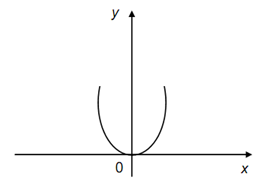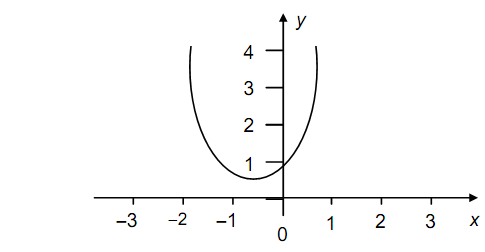Even and Odd Functions
We will first introduce two significant classes of functions: even functions & odd functions.
Let the function f describe on R by setting
f (x) = x2, for all x ∈ R.
You will notice down that
f (- x) = (- x)2 = x2 = f (x), for all x ∈ R.
This is an instance of an even function. Let's take a look at the graph of this function given below. We discover that the graph (a parabola) is symmetrical regarding the y-axis. If we fold up the paper along the y-axis, we will see that the parts of the graph on both of sides of the y-axis entirely coincide with each other. Such kinds of functions are called upon even functions. Therefore, a function f, described on R is even if, for each x ∈ R, f (- x) = f (x).

The graph of an even function is symmetric w. r. t. the y-axis. We also note down that if the graph of a function is symmetric w. r. t. the y-axis, the function ought to be an even function. Therefore, if we are needed to draw the graph of an even function, we may utilize this property to our advantage. We just need to draw that portion of the graph that lies to the right of the y-axis and then just take its reflection w. r. t. the y-axis to get the part of the graph which lies on the left of the y-axis.
Let us consider now the function f described by setting f (x) = x3, for all x ∈ R. We view that f (- x) = (- x) 3 = - x3 = - f (x), for all x ∈ R. If we let another function g given by g (x) = sin x, we will be able to note down again that
g (- x) = sin (- x) = - sin x = - g (x).
The functions f & g above are same in one respect: the image of - x is the negative of the image of x. Such functions are called odd functions. Thus, a function f defined on R is said to be an odd function if
f (- x) = - f (x), for all x ∈ R.
If (x, f (x)) is a point on the graph of an odd function f, then (- x, - f (x)) is also a point on it. It can be expressed by saying that the graph of odd function is symmetric w. r. t. the origin. In other terms, if you turn the graph of an odd function through 180o regarding the origin you will discover that you obtain the original graph again. On the other hand, if the graph of a function is symmetric w. r. t. the origin, the function ought to be an odd function. The above facts are frequently useful whereas handling odd functions.
While several of the functions that you shall come across in this course shall turn out to be either odd or even, there shall be many more which shall be neither odd nor even. Consider, for instance, the function f : x → (x + 1)2. Here f (- x) = (- x + 1)2 = x2 - 2x + 1.
Is f (x) = f (- x), for all x ∈ R?
The answer is 'no'. Thus, f is not an even function. Furthermore is f (x) = - f (- x), for all x ∈ R?
The answer is 'no' again. Thus f is not an odd function. The similar conclusion could have been drawn by letting the graph of f which is given in fig.

You will monitor that the graph is symmetric neither w. r. t. y-axis, nor with respect to the origin.